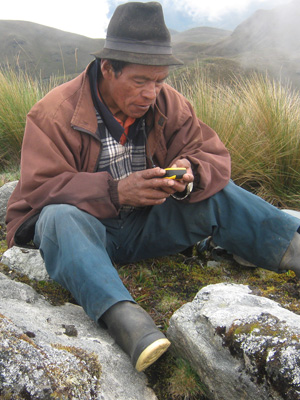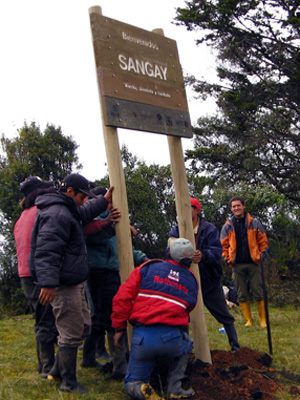

Capacity Building
Community park guards protect Sangay National Park
In late 2009, FCT convened regional actors to analyze methods to slow illegal invasions and large-scale burning of páramos in southern Sangay National Park. In this region of the park, funding provides for a single park guard and provincial administrator, who are charged with patrolling 120,000 hectares. These constraints jeopardize the protection of Ecuador's fourth largest national park. In this context, FCT and CELEC E.P. - Hidropaute sought to identify best practices for park protection in close collaboration with the regional and provincial offices of the Ministry of Environment (MAE), the agency that administers Sangay National Park. Greater patrol and protection of the southern zone emerged as an immediate priority.
A unique public-private partnership formed in which CELEC-Hidropaute E.P. agreed to fund a two-year pilot project dedicated to creating a group of park guards, with FCT and MAE providing training and oversight. The program targets community members, often with little formal education, for training as professional park guards. Local employment allows conservation to become part of the family income in a rural region where few employment opportunities exist.
The team of park guards includes ten members from seven mestizo and indigenous communities within or near the park. They patrol and protect the park, provide on-site education about the park to residents, school children, and visitors, and assist in scientific research and monitoring projects.
Future work aims to delimit the southern zone of the park in participation with local landowners and communities, thereby allowing for better protection of the natural and cultural resources found within the Park’s boundaries.
Greener roads in southern Sangay National Park
Ongoing and unplanned road construction threatens the integrity of southern Sangay National Park's unique ecosystems. Provincial governments often support ad-hoc road construction, disrgarding the existence of a protected area and pertinent environmental legislation. The aim of the Green Highways program is multifold: to educate authorities to the presence of protected area, alert road users to the existence of a national park, and work collaboratively toward the protection of the Park's natural resources alongside roads.
In 2008, in cooperation with the administration of Sangay National Park, FCT mapped two secondary roads that cross the Park's southern region—Queseras to Colepato and Zula to Pomacocho—and installed signage indicating park boundaries along them.